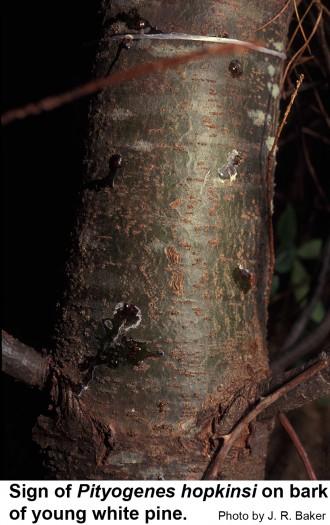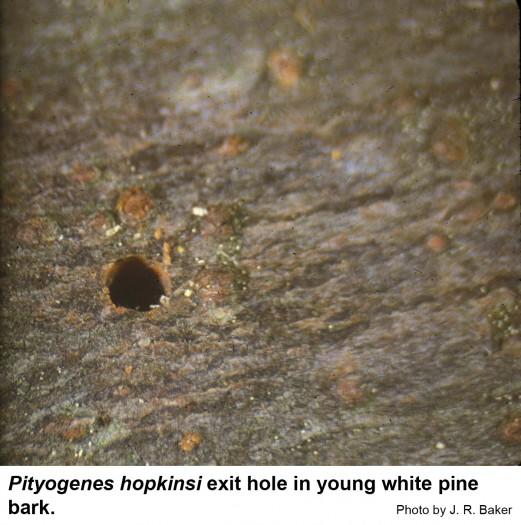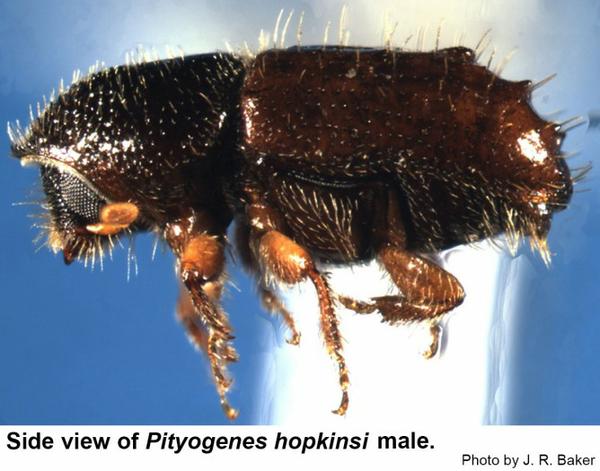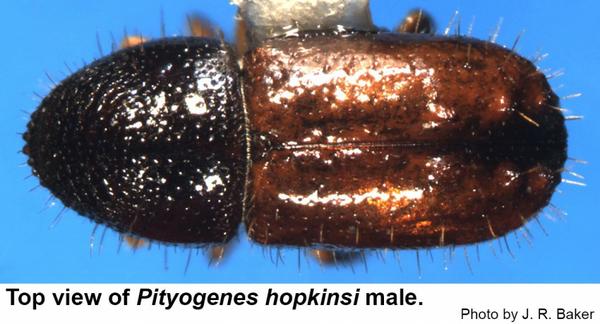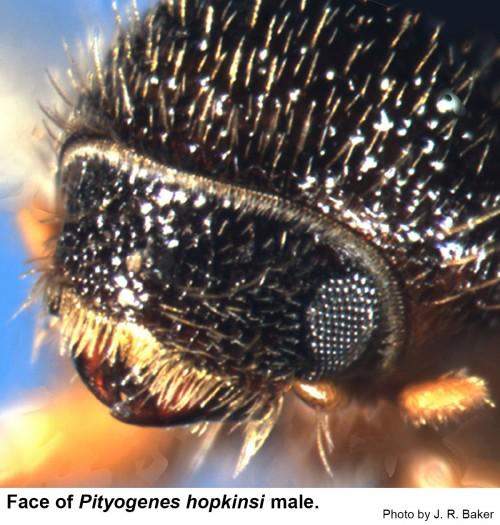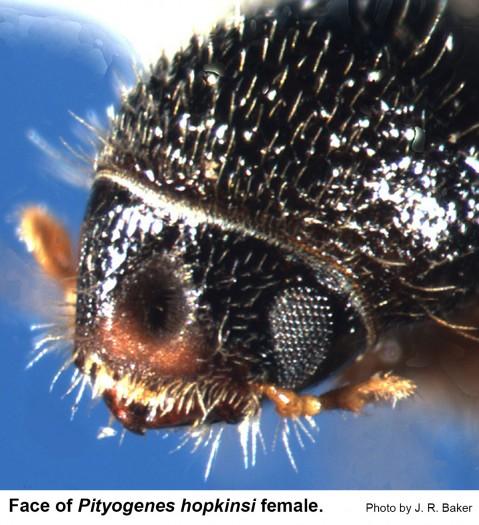Description and Biology
Chestnut brown bark beetles, Pityogenes hopkinsi, are tiny brown bark beetles that normally infest slash or weakened trees, and they even attack the lower limbs of healthy trees that are shaded excessively. Males bore into the bark and form a small chamber. Female beetles join the male and make long tunnels in the cambium that radiate out from the entrance hole. Females chew tiny niches in the tunnel walls and lay their eggs one to a niche. The tiny, white grubs chew tunnels that radiate away from the egg niches. When mature, the grubs pupate and some time later, new adults molt from the pupae, and each one chews through the bark to emerge. If the bark is peeled from an infested tree, the whole chamber, egg tunnels, larval tunnels and exit holes are visible in the bark and on the exposed wood.
Host Plant
The chestnut brown bark beetle has only been reported from white pine. Nursery stock dug during the winter for shipment in spring is sometimes suddenly infested by these beetles on the first warm day in late winter. Chestnut brown bark beetles normally infest slash or weakened trees and even attack the lower limbs of healthy trees that are shaded excessively. However, we have had several reports of this insect attacking white pines in the field as they are being dug or within one or two days of being dug if the weather is warm. The beetles seem to be very sensitive to the health of white pines and readily attack them whenever white pines are stressed and the weather is warm.
Residential Recommendation
White pines stressed by transplanting, drought, or some other factor can be protected from chestnut brown bark beetles by spraying the trunks with permethrin or one of the other pyrethroid insecticides. When used as directed, pyrethroids are very toxic to insects but are not particularly hazardous to humans and pets (other than fish-avoid using pyrethroids around pools, ponds, and streams).
References
- A Identification Tool for Bark Beetles of the Southeastern United States. Baker, J.R., J. LaBonte, T. H. Atkinson, and S B. Bambara. 2009. Lucid Key.
- The Bark and Ambrosia Beetles of North and Central America (Coleoptera: Scolytidae), a Taxoniomic Monograph. Wood, S. L. 1982. Great Basin Naturalist Memoirs, Vol 6. Brigham Young University, Provo, UT. 1359 pp.
- Extension Plant Pathology Publications and Factsheets
- Horticultural Science Publications
- North Carolina Agricultural Chemicals Manual
For assistance with a specific problem, contact your local N.C. Cooperative Extension Center
This Factsheet has not been peer reviewed.
Publication date: June 7, 2013
Reviewed/Revised: May 8, 2023
Recommendations for the use of agricultural chemicals are included in this publication as a convenience to the reader. The use of brand names and any mention or listing of commercial products or services in this publication does not imply endorsement by NC State University or N.C. A&T State University nor discrimination against similar products or services not mentioned. Individuals who use agricultural chemicals are responsible for ensuring that the intended use complies with current regulations and conforms to the product label. Be sure to obtain current information about usage regulations and examine a current product label before applying any chemical. For assistance, contact your local N.C. Cooperative Extension county center.
N.C. Cooperative Extension prohibits discrimination and harassment regardless of age, color, disability, family and marital status, gender identity, national origin, political beliefs, race, religion, sex (including pregnancy), sexual orientation and veteran status.

